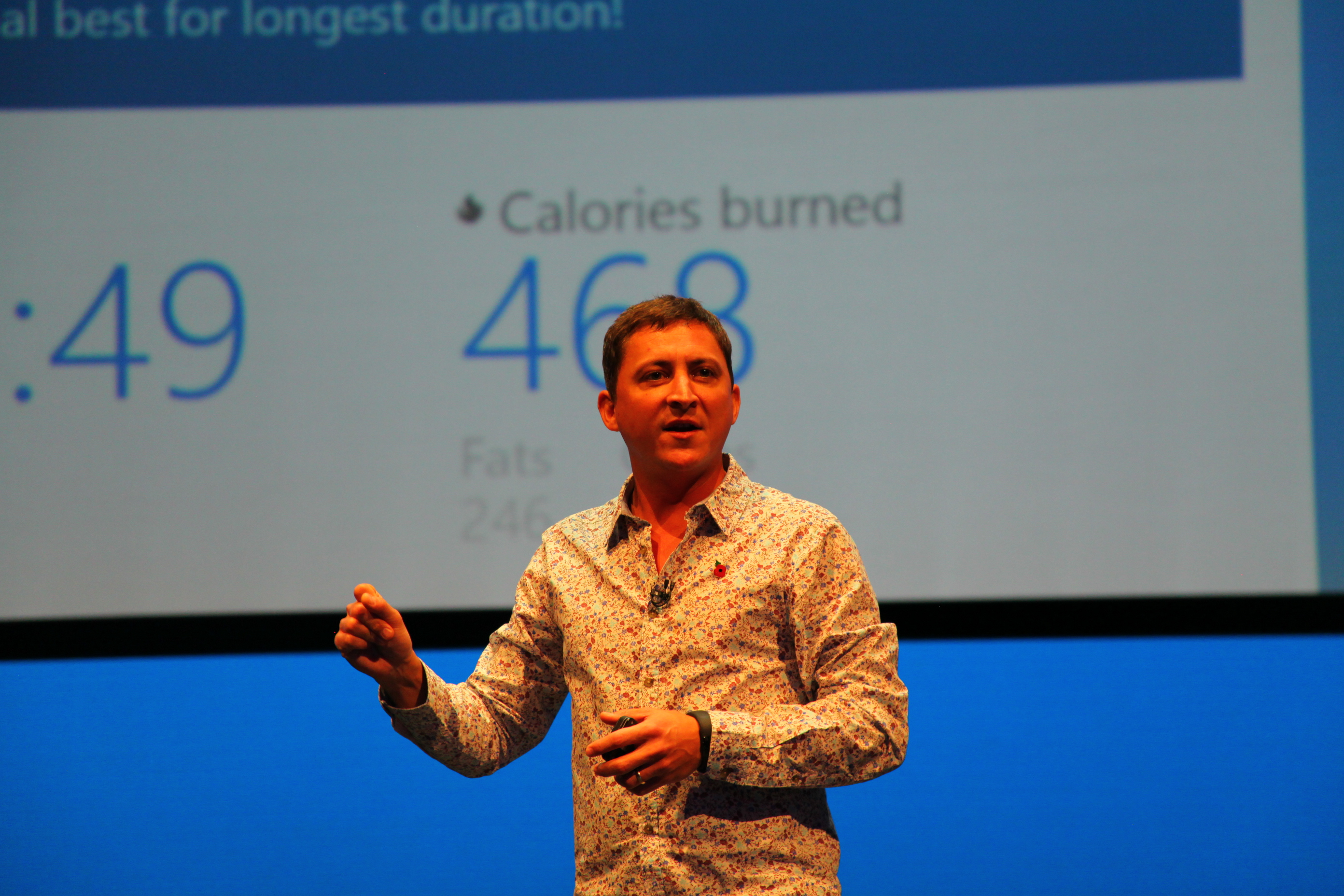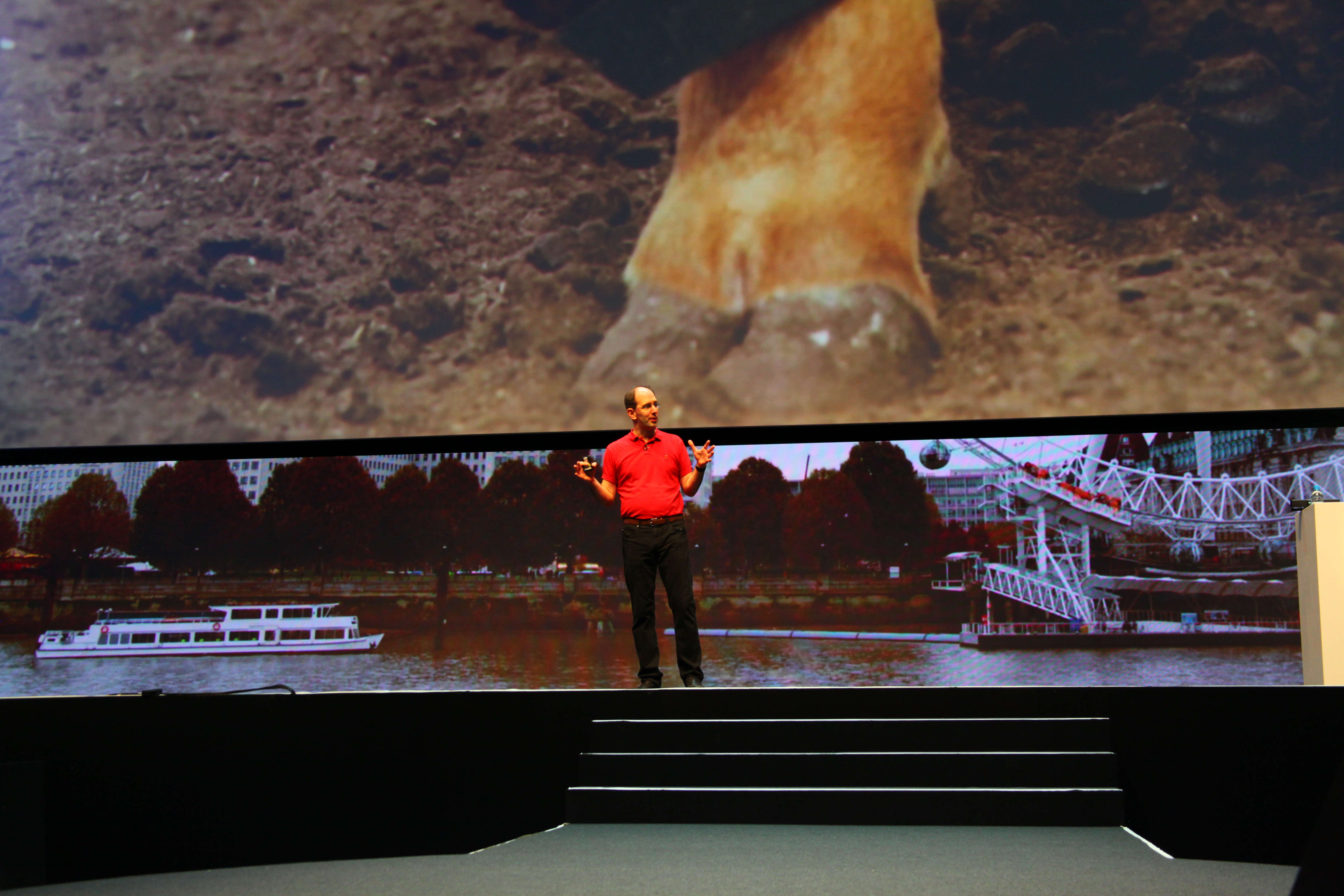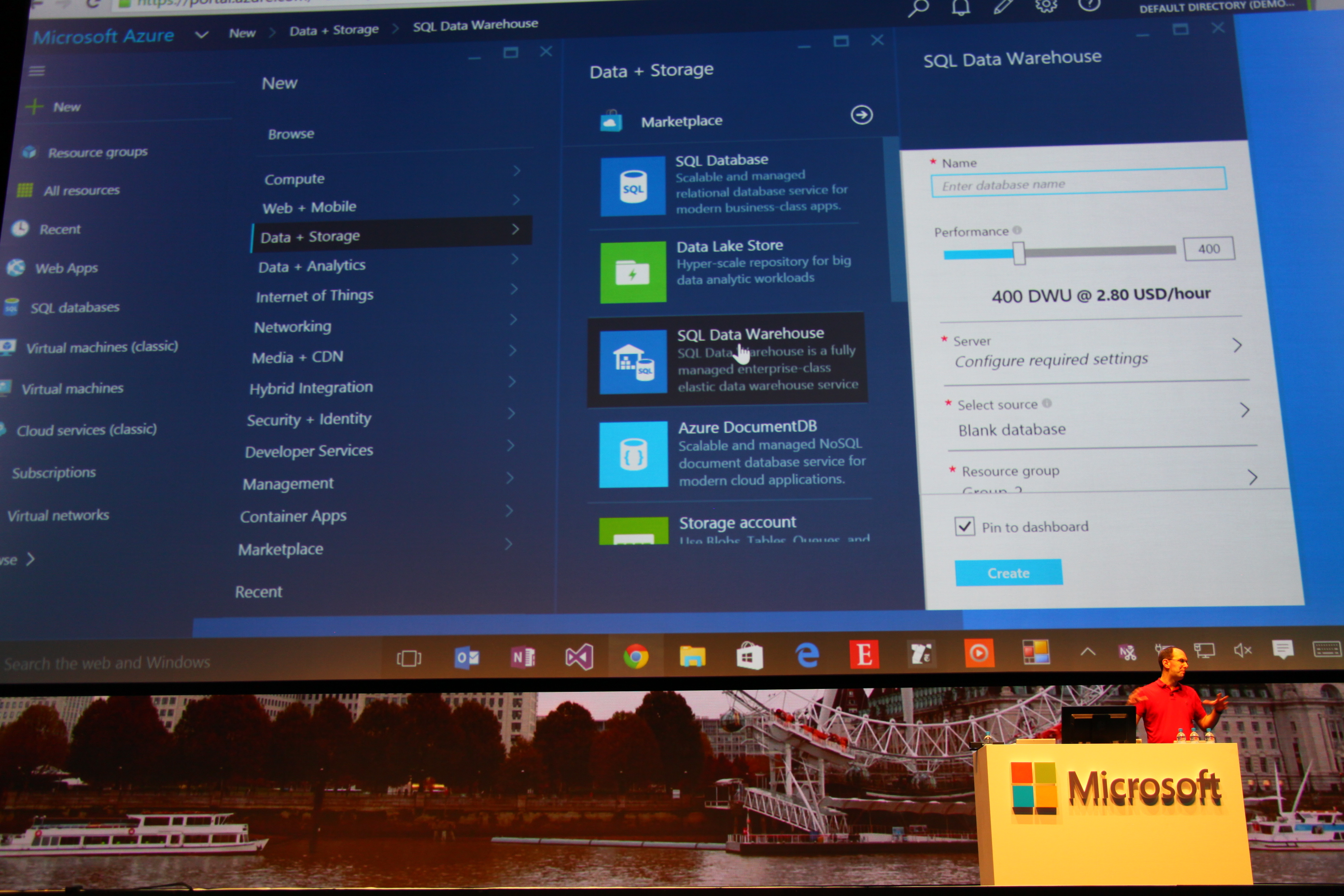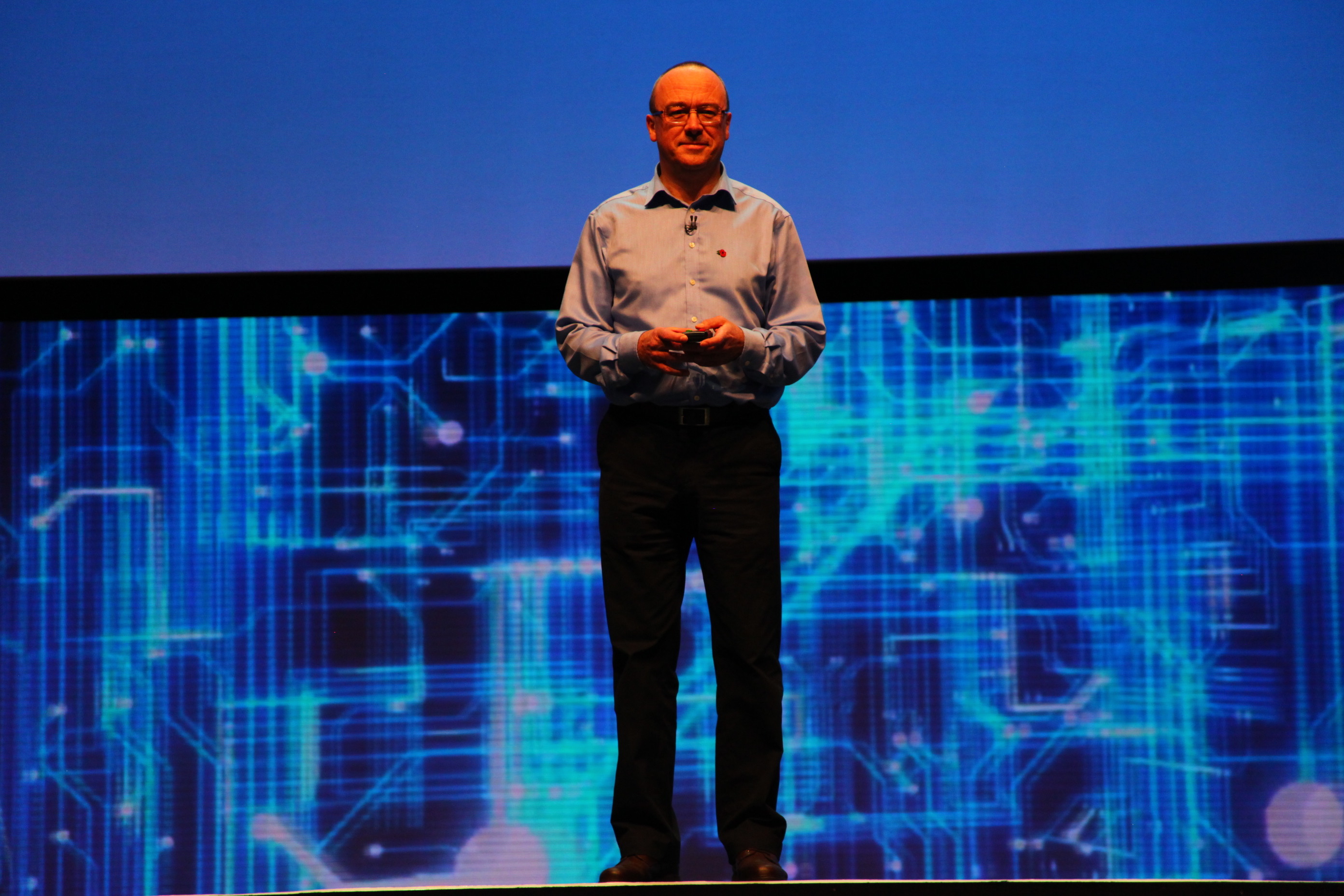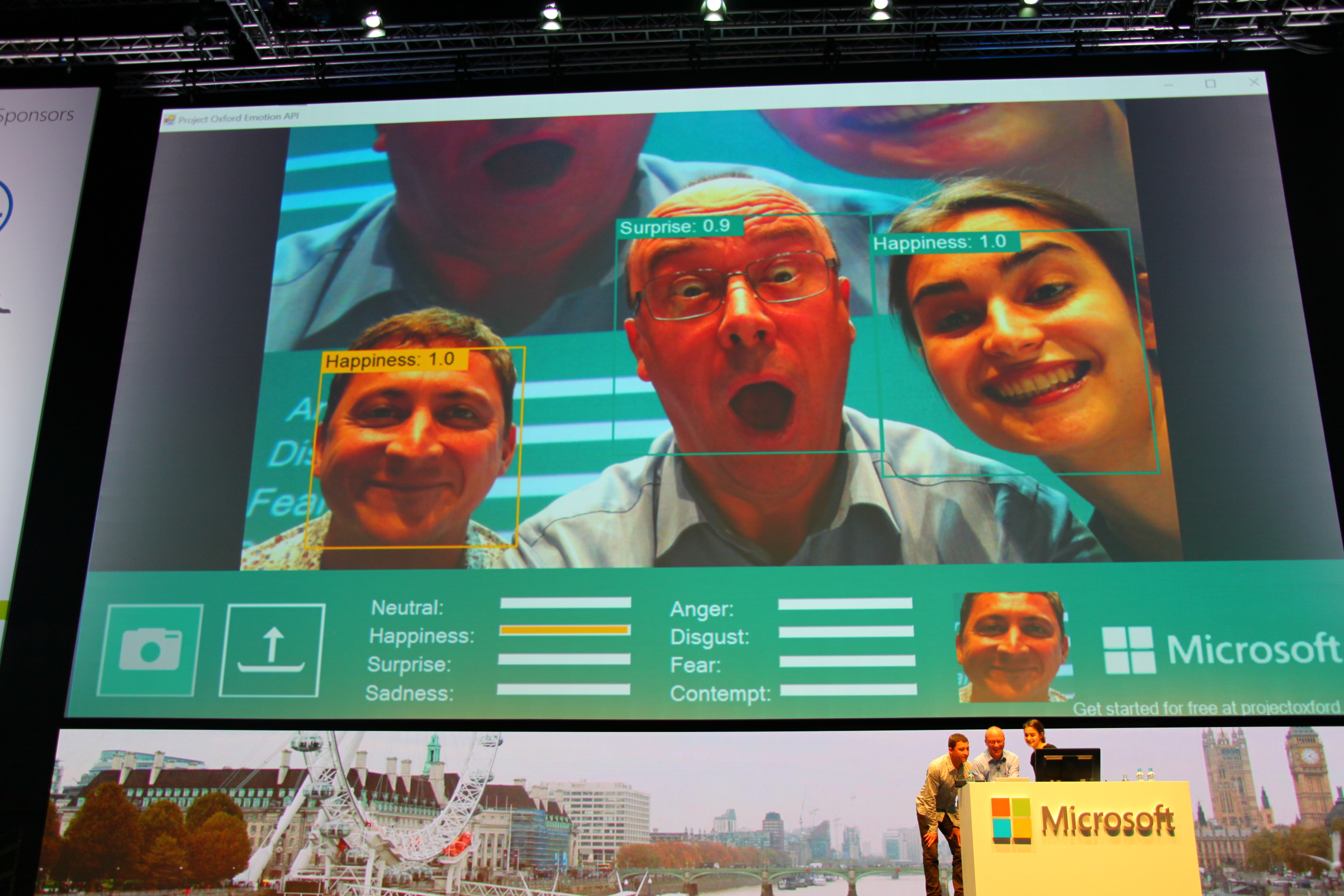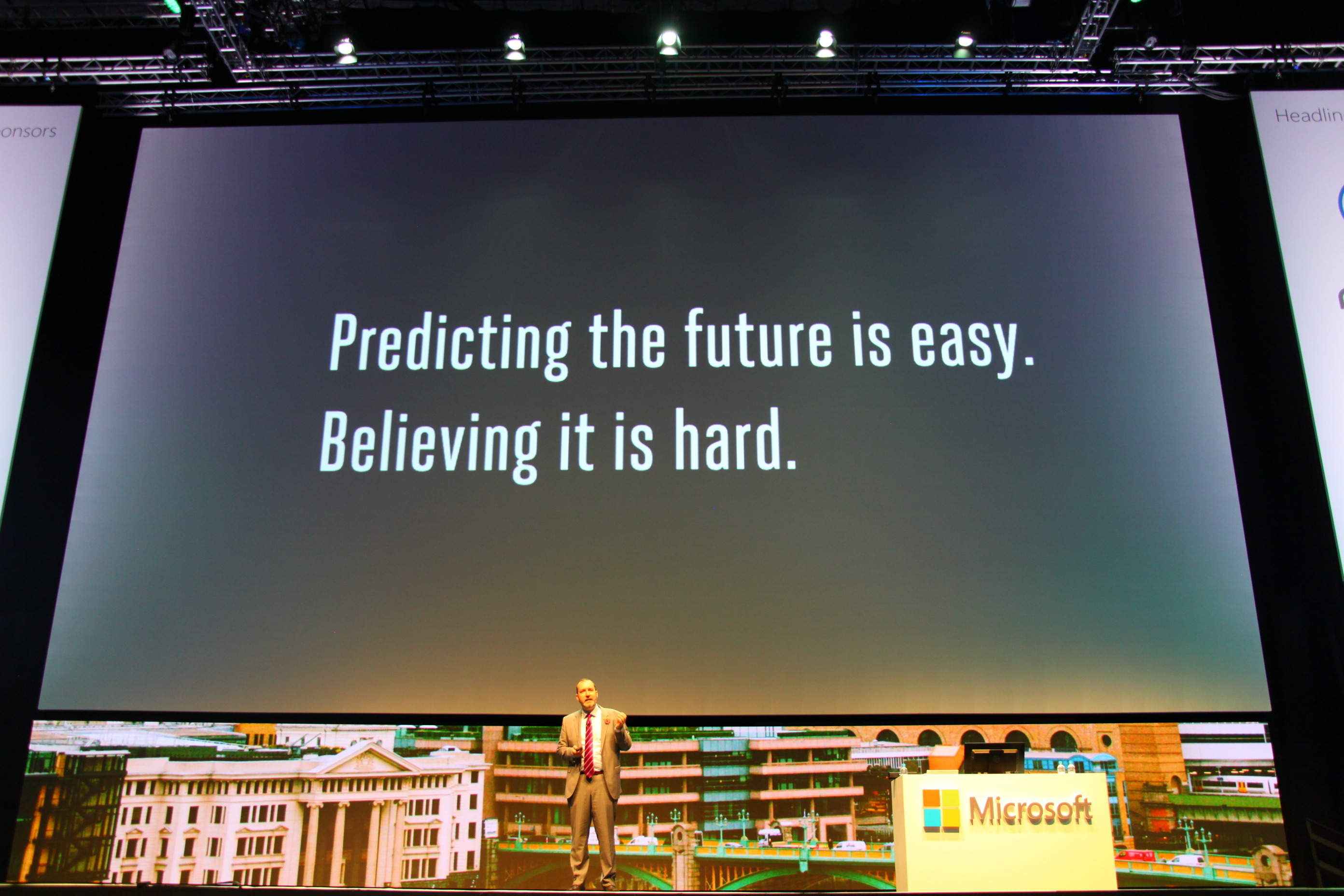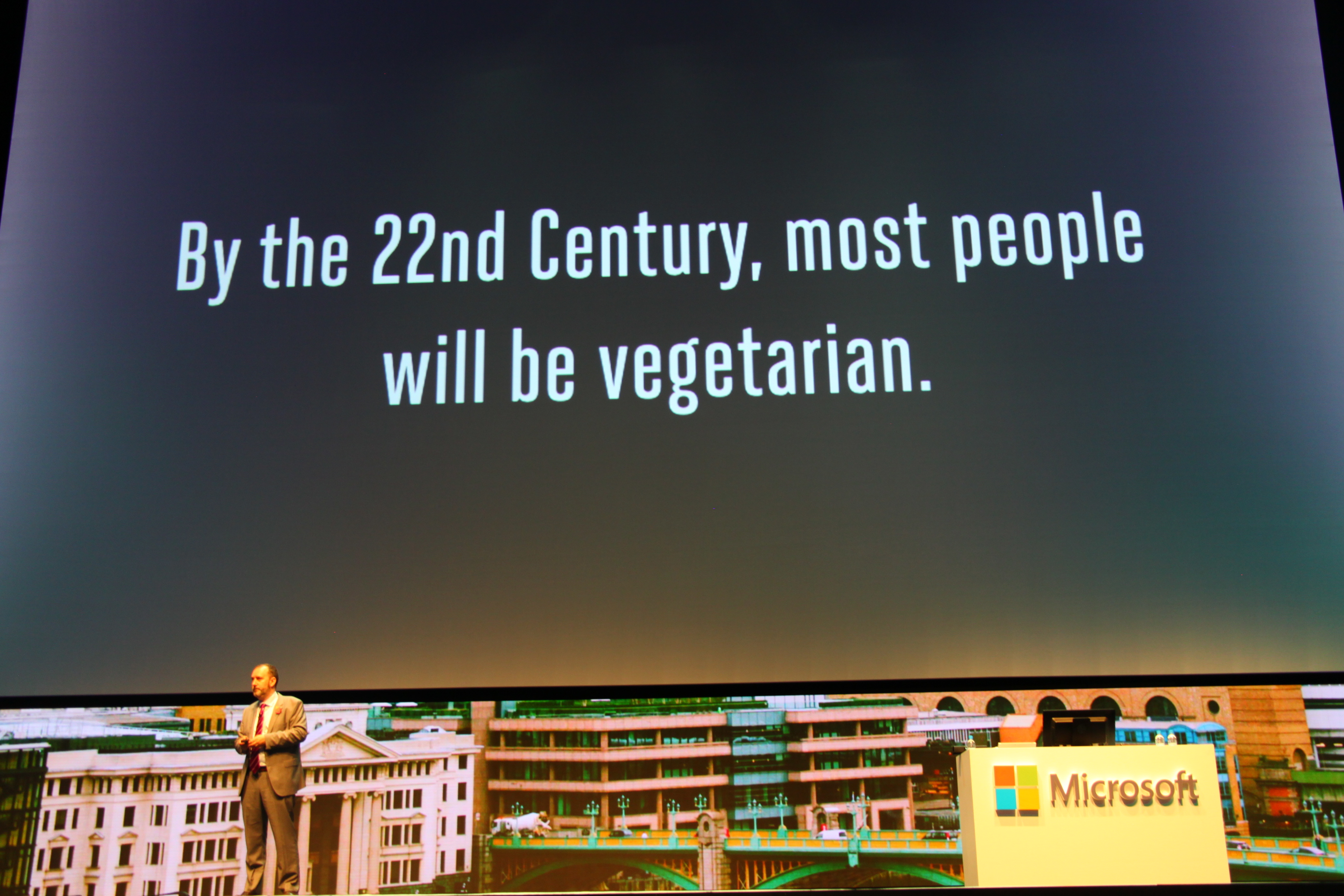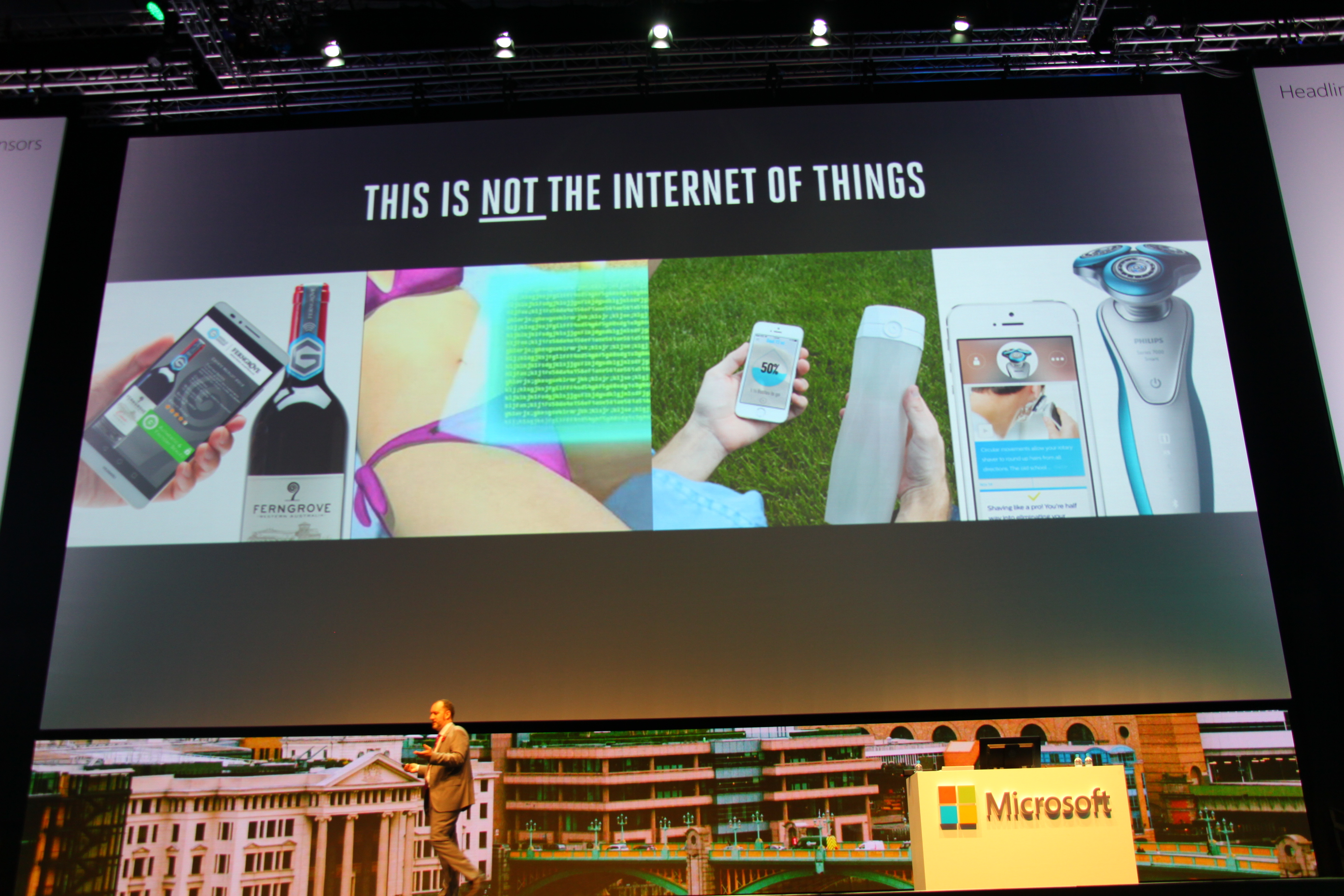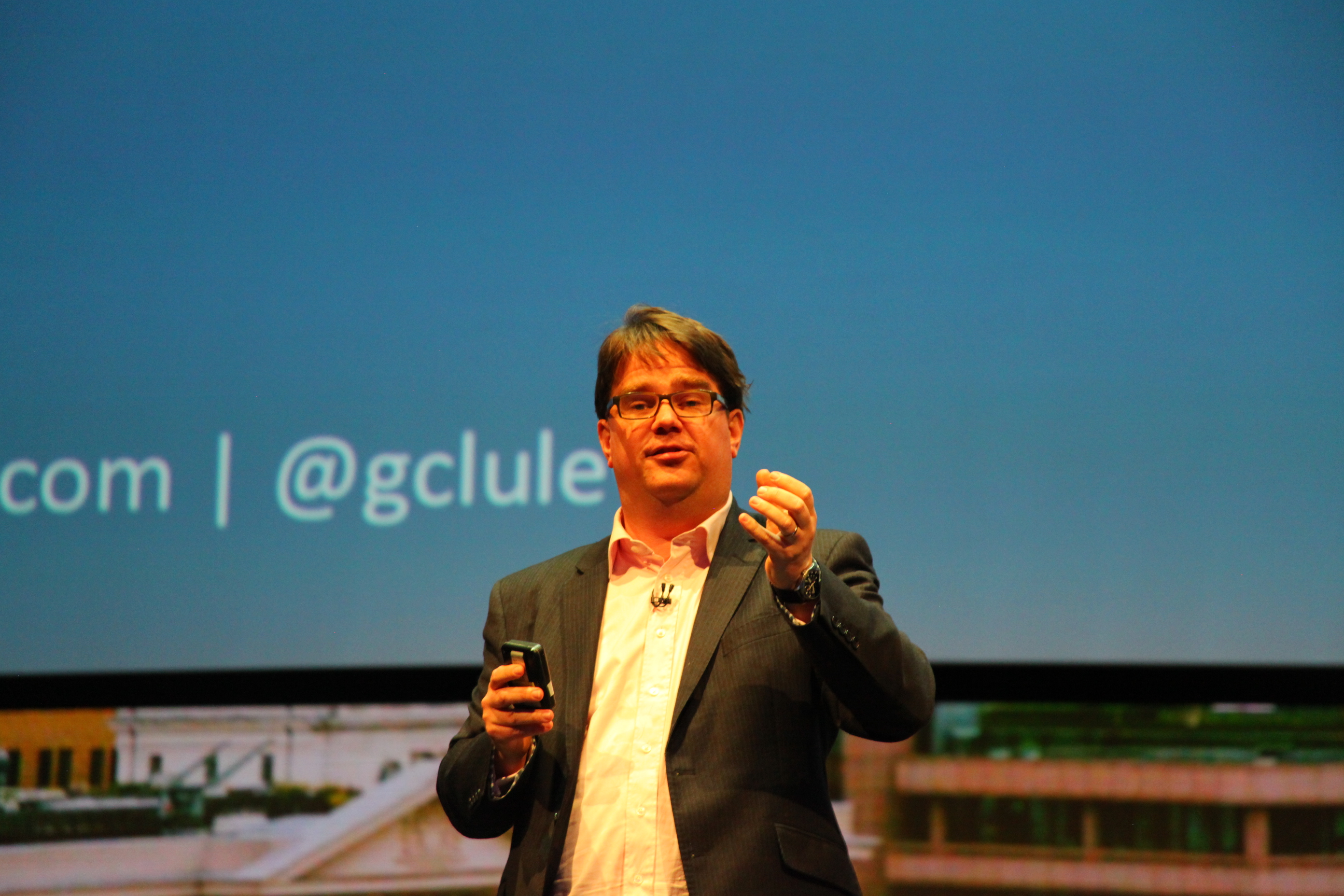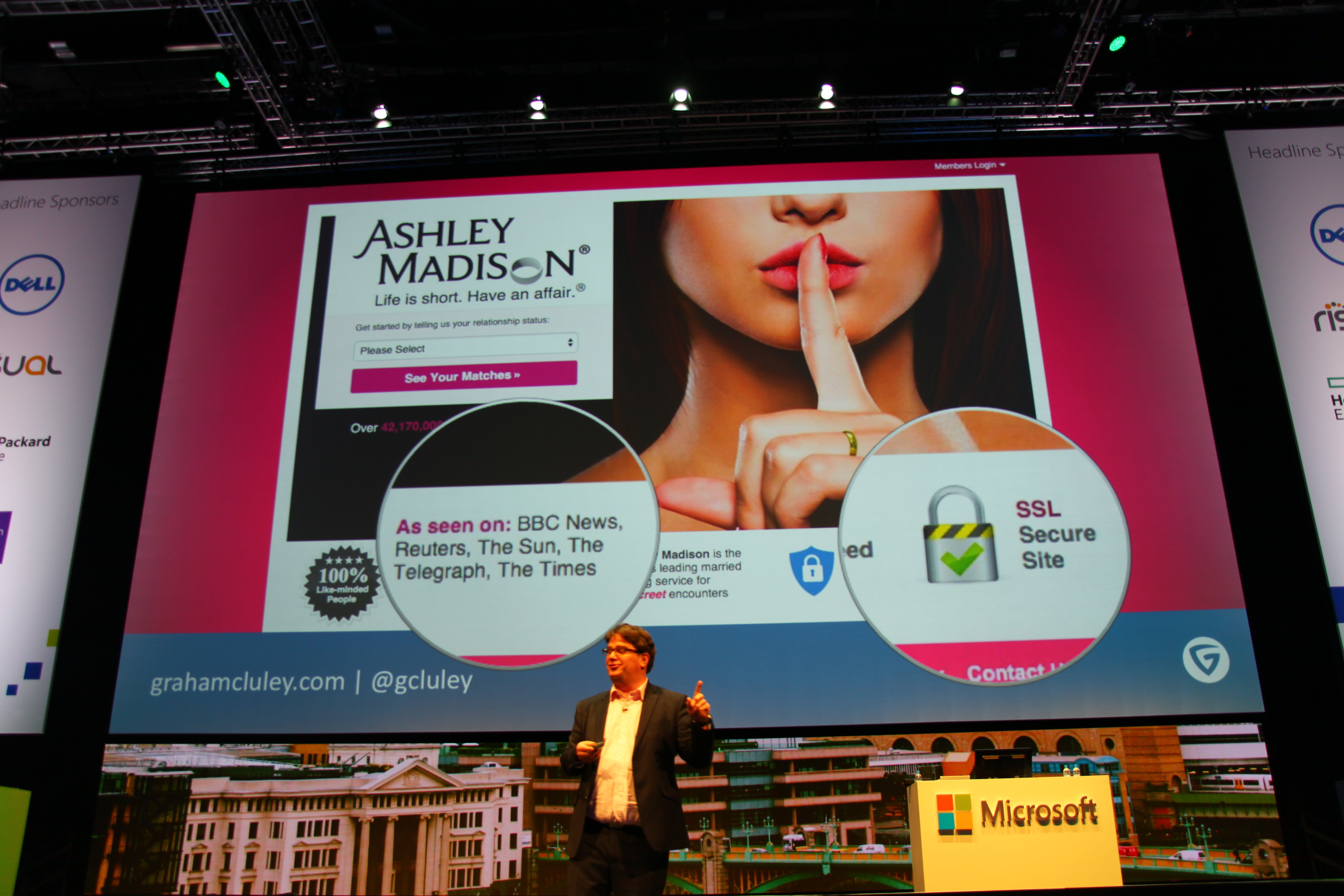From 'The Connected Cow' to the 'Internet and Internot of Things'
The second day of Future Decoded is well underway, with a jam-packed morning full of keynotes already behind us, and an afternoon of exciting talks ahead of us, before Bryan Cox and Krysta Svore take to the Keynote Stage to discuss quantum computing!
Day 2 is all about mobile as a state of being and enabling you to create the seamless experiences that make the ordinary, magical. After an introduction from the excellent Andrew Spooner, including stories of his time dressing up as a nun, we’ve had talks from Scott Guthrie on “The Connected Cow”, Chris Bishop on “The Road to General Artificial Intelligence”, Kevin Ashton on “The Internet and Internot of Things”, and Graham Cluley on “Why we need a trustworthy Internet”. Never fear if you weren’t able to make it, here’s our rundown of what you may have missed.
The Connected Cow
Scott Guthrie, EVP Cloud and Enterprise, had some bold statements on the future of the cloud and what it can do for us, and he backed it up with a story about cows. Not just any cows, the increasingly common breed of cloud connected cows (I know, you can’t make it up).
The story was a strangely engaging one, he spoke of how Fujitsu had partnered with a Japanese farmer to place his herd of cows into the cloud. Cow farming is a tricky business at the best of times, with it being common to lose cattle to undetected diseases or to miss the period of time when cows can reproduce. Without assistance, farmers would be lucky to achieve a 55% success rate of detecting when a cow was in estrus (ready to produce). With the help of a cloud based system, this figure rockets to an impressive 95%! Cattle production also increased as a result, from 39% to 67%. We could go on about bovine connectivity until the cows come home (sorry), but we’ll save that for another article.
Azure
Aside from cows, Scott also spoke about Azure: “It’s not just the Windows Cloud, and it isn’t just for Microsoft software”. In fact, it doesn’t matter if you want to use Linux or Windows, or what type of database you want to build, Azure can help you build great solutions. Nor does it matter how big your business is, as more than 40% of revenue for Azure comes from start-ups and ISVs. As Scott made clear through his demos of Power Bi and Azure Data Warehouse, you can take any type of data, be it structured or unstructured, and find out what has happened, why it has happened, and what you should do about it in the future. In his own words, “You’ll then be able to use this data to transform your applications and solutions”.
The Road to General Artificial Intelligence
Chris Bishop, Lab Director at Microsoft Research, was next on the Keynote stage, taking a look at what has changed in the last few years to cause people to think AI is within reach. Chris explained how the technological advancement has much to do with the work that is being put into deep neural networks, which are inspired by the neural networks that exist in the brain. We still don’t know how the brain works, but what we do know can be used for inspiration and applied to new technologies.
Speech Recognition
A prime example of the work deep neural networks are doing can be seen in speech recognition software. For a long time, even with the advances in technology and approach, there was always a constant error rating that proved impossible to beat. That is until work with deep neural networks was applied, upon which a staggering 30% drop in error rating was observed. As Chris expressed, “This is how effective deep learning can be”.
Project Oxford
Chris ended his Keynote with the announcement of a new collection of APIs for Project Oxford, currently in beta, that offer an amazing range of new options to developers. Ranging from a spell checker that is constantly updated to include new words and slang terms, to APIs for facial recognition and emotion recognition – like the image below! What’s perhaps most impressive, is that a number of these are as little as three lines of code!
It’s difficult to do justice to the sheer technical detail that Chris went into, so we’d suggest keeping an eye open for his full Keynote on Channel 9 in the coming days!
The Internet and Internot of Things
Following Chris Bishop was Kevin Ashton, inventor of the “Internet of Things”, with his look at what the future holds for IoT. In perhaps the greatest crowd pleasing moment of the event so far, he began by taking a video of the crowd and sharing it on Twitter (#FutureDecoded). His reasoning, 10 years ago that would have seemed miraculous. In Kevin’s words, “It’s not how quickly things changed, but how quickly we get used to how quickly things change and become ordinary”.
“Predicting the future is easy. Believing it is hard”
In the first of many bold statements, Kevin proclaimed that predicting the future is easy, it’s believing in it that’s the hard thing – just look at the Twitter mention previously. Of course, the easiest prediction to make is that, “things are going to change”, but even this can be hard for some people to believe. In fact, Kevin even offered up his own predictions for the future:
- You will own a self-driving car by 2030
- Your great-grandchildren will have a 3-digit life expectancy
- We will discover extra-terrestrial life in this century
- Within the next 100 years, a human being will be born on another planet
- By the end of the 22nd century, most people will be vegetarian
- We will survive climate change
- Within 20 years most computers will power themselves – this is the IoT prediction
Think of these what you will, but the point is that whilst some may seem hard to believe, they are all entirely plausible and possible.
NOT the Internet of Things
Kevin made a few things clear: smart wine bottles are NOT the Internet of Things. Neither are smart water bottles, or smart bikinis, or even the smart shaver. Just being connected to the internet is not IoT.
IoT enables us to capture data using a wide array of sensors, turning the world into data. That data doesn't go onto an Excel Spreadsheet, or even a Pivot Table – it goes into a cloud based Machine Learning system, finds patterns and the produces a decision.
“The IoT was invented in the UK – we can be a leader, essential for the continued scaling of the human race” – Kevin Ashton
Kevin Ashton’s Keynote was great for IT Pros, and we feel that it deserves it’s own summarising piece – we’ll be writing that up in the next few days!
We need a trustworthy Internet
Next up on the Keynote Stage was Graham Cluley, who began by giving us reasons to trust him: apparently he has a dog, who’s tag was covered over in the photo he shared because he doesn't trust us (oh the irony!). Graham did, however, make it clear what we can’t trust.
You can’t trust the Internet
23rd April 2013 – the Dow Jones stock index plummeted after an official news channel was hacked and the hackers tweeted that the White House had been bombed, and that Barack Obama was injured.
You can’t trust email either
Email is inherently insecure and untrustworthy.
And you can’t trust websites
Ashley Madison even has an SSL secure message on it’s website, it must be impregnable right?
Graham made it clear that the internet is getting much bigger because of IoT, and not all devices will be built with privacy and trust in mind. We can clean up computers and develop software that’s secure, but over time vulnerabilities will develop, and if we can’t update and patch it then it’s not secure.
Graham went much further into why we need a trustworthy internet, but much like Scott and Kevin’s keynotes, we feel like there is a definite need for an article that explores his talk in more detail – to be published in the coming weeks.
These four keynotes are not the only keynotes happening on Day 2 and there’s plenty of other exciting talks from industry experts taking place. Be sure to follow our social channel @TechNetUK for live tweets throughout the day!
